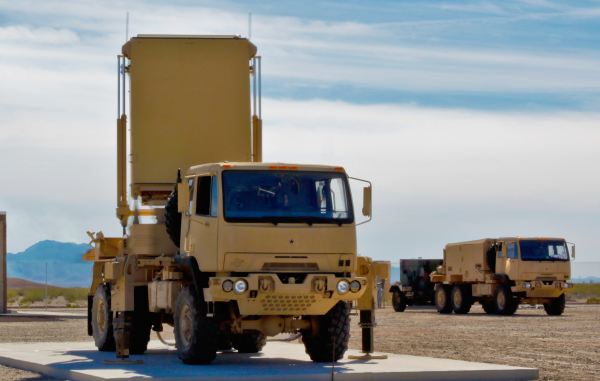 |
 |
 |
Army News United States |
| |
Friday,
05 November 2010, 19:26 PM |
|
|
| |
The
new US Army EQ-36 Mobile Radar system has been deployed
for the first time.
|
| |
|
| |
|
US
defence and aerospace Company Lockheed Martin’s EQ-36
is a mobile radar unit that specialises in locating enemy
mortar and rocket launchers, and it is now being used operationally
in Afghanistan and Iraq.
|
| |
|
a |
In
US Army service, the EQ-36 will take over from the older
TPQ-36 and -37 designs, initially working alongside them
before replacing them entirely.
The
EQ-36 works in 90 degree or 360 degree modes to provide
comprehensive protection against attack from non-targeted
sources. Examples of this counterfire target acquisition
radar technology were made available for US Army testing
some months ago and, following a successful trial outcome,
the initial two units were pressed into service on 2 July
this year. |
| |
Lockheed
Martin highlights the ability of the EQ-36 mobile radar
to provide a single replacement for two current, in-service
radar systems. This, it says, provides multiple benefits
including cost reductions and opportunities to re-task service
personnel to other areas of duty.
“From the start, the EQ-36 program has been about
the soldier and the Army’s urgent need to protect
them from daily indirect fire threats,” said Carl
Bannar, vice president of Lockheed Martin’s Radar
Systems.
“With more than 40 years of radar experience, we developed
the EQ-36 radar in fewer than 30 months - less than half
the time it traditionally takes to develop a new radar system.” |
| |
As
a solid-state unit, the EQ-36 offers ruggedness, durability
and increased performance, efficiency and safety levels.
It also takes five minutes to set-up and just two minutes
to disassemble, making the new radar a practical asset in
the high-tempo conflict zones that figure within modern-day
US Army deployments.
The EQ-36 sits on top of a five-ton truck, and US Army troops
will be able to operate the system from remote locations,
via remote control, or from a shelter that forms part of
it.
Earlier this year, the US Army ordered an additional 17
EQ-36 mobile radar units, supplementing the seven already
delivered. |
|
|
|
|
 |
 |
 |
|
